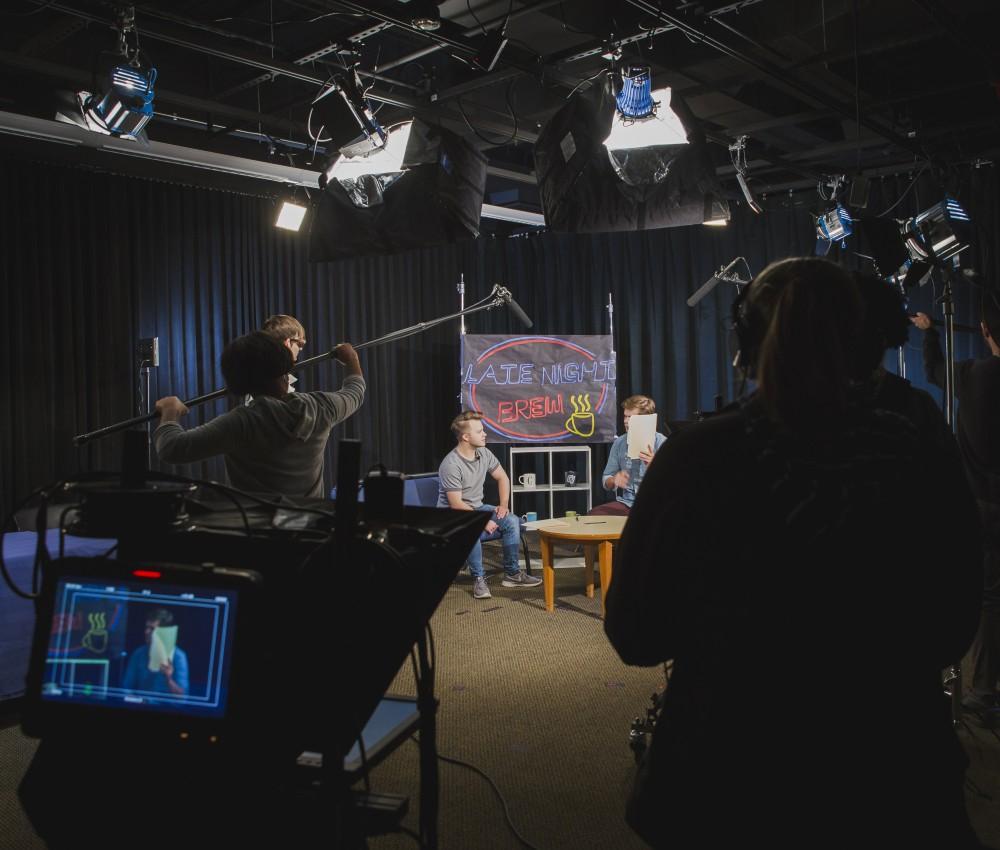Inside GV’s shortage of student media funding

GVL / Leah Kerr
Jan 21, 2019
James Kilborn
Concerns regarding student media funding on campus have been raised in recent weeks, as funding for Grand Valley media programs pales in comparison to other universities within the state. Multimedia Journalism Professor Len O’Kelly spoke to Student Senate regarding the issue, stating that among 15 state-funded universities, GVSU’s student media funding ranks 14th.
O’Kelly emphasized that this discrepancy in funding as notable, as GVSU offers communications courses that are often unavailable to students at other universities, all while receiving less funding for student media-related purposes.
“University of Michigan has student media, but it’s not related to their curriculum in any way, shape or form,” O’Kelly said. “A couple of years ago, I visited their radio station and they were shocked to learn that students at Grand Valley can take a class and learn how to use the radio station because at University of Michigan there is no such thing.”
These concerns over student media funding come as changes are occurring in the manner of distributing news. Newspapers, television stations and radio broadcasts are adapting, and these changes often require investments to ensure they remain viable methods of transmitting information to students.
For example, O’Kelly said an emphasis with newspapers on digital formats is becoming increasingly common and outlets are adapting to meet these demands.
“With newspapers, we’re going to have to wrestle with digitization, which is getting content in a digital form and online along with print,” O’Kelly said. “These things cost money. Unless you’re lucky and get a group of students who are good at coding or are app-developers, you’re going to have to pay someone to do that. The app for our radio station for example, we spend $895 a year to make sure our platform runs, that way we don’t have to do anything except make sure it has content.”
Additional funding could also be directed toward securing an FM radio channel, an action that would boost the university’s ability to reach listeners across the region. O’Kelly said that the ability to increase listeners also provides more support for advertisement opportunities.
“For radio, getting an FM signal would be first and foremost,” O’Kelly said. “We have an internet-only signal and it’s fine, but there’s something about the credibility attached to FM signals. We also can’t just get one of those. There has to be a license and there has to be an application process, and none of that is available right now.”
O’Kelly said that efforts to secure funding for additional media programs has been proposed in the past, but due to discrepancies in how tuition is calculated, has been rejected by the university’s Board of Trustees.
One idea proposed in the past was to include a “subscription fee” to tuition every semester, an optional service that students could either opt in or out of. This would allow student media services to operate without requiring funding from Student Senate.
“One way we talked about raising funding for media was doing what Michigan State and Western Michigan (universities do), which puts a line on student tuition bills for student media, which is essentially a subscription fee,” O’Kelly said.
“You’d have the right to opt out — say you don’t agree with it and not pay it. We did the math. If we got two dollars a semester from students, that’s 25,000 students for two semesters, that would give us $100,000 a year. The university’s Board of Trustees said, ‘Absolutely not, that would be seen as a tuition increase.’”
O’Kelly said that if granted additional funding, student media would be able to accomplish more across multiple formats, such as the purchase of an FM radio signal and adapting student television to meet on-and-off-campus demand. As one of west Michigan’s largest universities, O’Kelly said that GVSU has the potential to reach a large audience within the region, grant students and residents with local programming and provide students with hands-on experience.






















